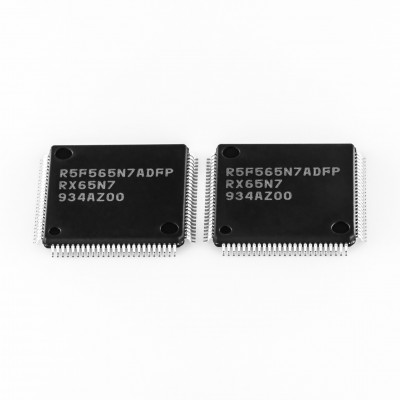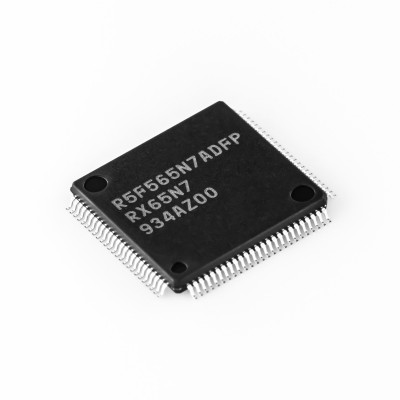产品详情
32-bit RXv2 CPU core
• Max. operating frequency: 120 MHz
Capable of 240 DMIPS in operation at 120 MHz
• Single precision 32-bit IEEE-754 floating point
• Two types of multiply-and-accumulation unit (between memories
and between registers)
• 32-bit multiplier (fastest instruction execution takes one CPU clock
cycle)
• Divider (fastest instruction execution takes two CPU clock cycles)
• Fast interrupt
• CISC Harvard architecture with 5-stage pipeline
• Variable-length instructions: Ultra-compact code
• Supports the memory protection unit (MPU)
• JTAG and FINE (one-line) debugging interfaces
■ Low-power design and architecture
• Operation from a single 2.7- to 3.6-V supply
• Low power consumption: A product that supports all peripheral
functions draws only 0.19 mA/MHz (Typ.).
• RTC is capable of operation from a dedicated power supply.
• Four low-power modes
■ On-chip code flash memory
• Supports versions with up to 2 Mbytes of ROM
• No wait cycles at up to 50 MHz or when the ROM cache is hit, onewait
state at up to 100 MHz, two-wait state at above 100 MHz
• User code is programmable by on-board or off-board programming.
• Programming/erasing as background operations (BGOs)
• A dual-bank structure allows exchanging the start-up bank.
■ On-chip data flash memory
• 32 Kbytes, reprogrammable up to 100,000 times
• Programming/erasing as background operations (BGOs)
■ On-chip SRAM, no wait states
• 256K/640 Kbytes of SRAM (no wait states)
• 8 Kbytes of standby RAM (backup on deep software standby)
■ Data transfer
• DMACAa: 8 channels
• DTCb: 1 channel
• EXDMAC: 2 channels
• DMAC for the Ethernet controller: 1 channel
■ Reset and supply management
• Power-on reset (POR)
• Low voltage detection (LVD) with voltage settings
■ Clock functions
• External crystal resonator or internal PLL for operation at 8 to 24
MHz
• Internal 240-kHz LOCO and HOCO selectable from 16, 18, and 20
MHz
• 120-kHz clock for the IWDTa
■ Real-time clock
• Adjustment functions (30 seconds, leap year, and error)
• Real-time clock counting and binary counting modes are selectable
• Time capture function
(for capturing times in response to event-signal input)
■ Independent watchdog timer
• 120-kHz (1/2 LOCO frequency) clock operation
■ Useful functions for IEC60730 compliance
• Oscillation-stoppage detection, frequency measurement, CRCA,
IWDTa, self-diagnostic function for the A/D converter, etc.
• Register write protection function can protect values in important
registers against overwriting.





 浙公网安备 33010502000757号
浙公网安备 33010502000757号